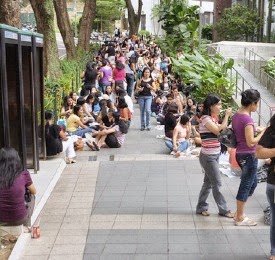Finding Options
Many people have become depressed and pessimistic nowadays. It would have been due to certain situations that have overwhelmed their coping mechanisms. Everyone though have experienced in some extent crises in their lives. No one is exempted from this, but there are people, who have incredible resilence brought about by their perception of the problem. This leads them to actively seek for alternatives for solutions to their problems.
In this blogpost, I will attempt to shed light the importance of finding options to one's situation. This is to emphasize how a person would change his or her perception to a problem to better see effective alternatives addressing the difficulty.
Changing perceptions.
A problem is a subjective acceptance of a person of a negative situation or stimuli. Being used to the same stimuli will make one think of the situation less priority or less of a problem. Furthermore, anything even how small and insignificant it is could create a problem, should person identifies a negative meaning for the stimuli. A TV program could lead to suicide if there are content threatening the individual's ego and overwhelming his or her coping mechanism. It is not always socially-identified stressful events like death, loss or failures that constitute a problem. Hence, it is all in the mind of the person. Changing one's perception, therefore is a must.
Seeking for alternatives.
Solutions and options are ideas, complete or incomplete which have the capacity to address partially or wholly a perceived problem. The challenge lies on finding these alternatives. Worst case scenario happens when one limits his or herself to a point that these limitations are self-imposed, making the problem insolvable. The moment one say more "buts" rather than "then" is a clear manifestation that an individual is trying to put himself or herself inside a closed box of no to few alternatives. Due to these, individuals lose hope and the cycle becomes endless. The only way to break this cycle is to gather more information, actively change one's environment and perspective to increase the probability of finding alternatives.
Trial and error.
Once a person have several alternatives, the person would need to evaluate each option objectively. It is usually not the most convenient choice that is the most effective. Trying to remain unbiased and free from strong emotions is the key to this crucial decision-making process. Moreover, the person must choose the best option, but that does not mean that there is no second choice, or third, and so on. The chance of failing is great when the problem is causing anxiety and despair in an individual. Hence, the more willing an individual to undergo this trial- and-error process, the greater possibility he or she will end up with solving his or her problem.
In the end, there are no clear cut procedure on how to solve a problem. What works for one may not work for the other. It is important that one tries to take a step forward, rather than moving away from the problem due to fear and lack of courage. It is also crucial that everyone learns that in life nothing is certain and that failure is real and expected in one's life. Dealing with is an option and getting through and out of it is actual definition of success.











Comments
Post a Comment